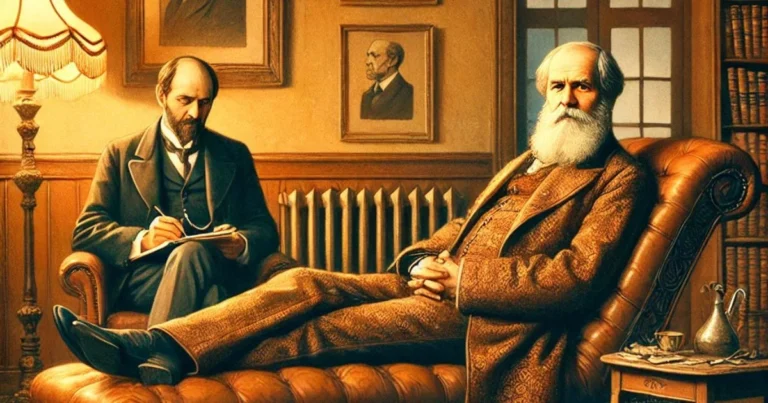Moonwalking with Einstein: The science behind superhuman memory
What if our memory wasn’t as limited as we believe? Remembering every name, every face, or even the smallest details of a book read years ago isn’t a fantasy reserved for geniuses. In a world where we increasingly outsource our memories to devices, Joshua Foer invites us, through his 2011 book Moonwalking with Einstein, to rediscover the extraordinary potential of human memory. Foer, a science journalist with a passion for the mysteries of the human brain, is renowned for his work on cognitive abilities and his deep dive into memory techniques. Blending personal narrative with scientific exploration, this book takes us on a fascinating journey through the sentinels of the human mind.
From journalist to memory champion: joshua foer’s unlikely journey
Joshua Foer’s adventure begins as he covers a memory competition as a journalist. He is captivated by the feats of participants who can recall 252 random digits in sequence or the exact order of multiple shuffled decks of cards. Intrigued by their ingenuity, Foer wonders whether these mental feats are accessible to anyone, or just a select few.
Guided by experts like Ed Cooke, a grand master of memory, Foer embarks on an intensive training regimen involving unconventional exercises, such as associating random words with vivid mental images. His goal is not merely to compete with the best but to push his own cognitive boundaries. Among the pivotal moments he describes is the first time he memorizes an entire deck of cards in under two minutes, an achievement that seemed unimaginable just months earlier. Ultimately, Foer enters the competition himself, delivering an impressive performance and demonstrating that memory is not a fixed talent but a skill that can be cultivated through discipline and technique.
Moonwalking with Einstein, is more than just a personal success story. The book delves into the rich history of memory, shedding light on techniques like the “memory palace.” Originally devised to help orators recall lengthy speeches or complex lists, this method remains in use today by memory champions.
Foer shares his own experience of memorizing multiple decks of cards by imagining a walk through a fictional house, with each room representing a specific card. This method also helped him retain long strings of numbers and names. By linking these achievements to modern neuroscience discoveries, Foer reveals that although human memory is inherently fallible, it can be significantly enhanced with simple yet powerful tools. By making these techniques accessible, he encourages readers to explore and develop their own memory potential.
Techniques, tricks, and truths about the mind
The power of the human brain
Foer highlights our innate ability to form visual associations and organize complex information. He describes using eccentric mental images to memorize long lists of random words, associating them with vivid and often humorous scenes. These often-overlooked abilities are illustrated through captivating anecdotes, such as recalling historical dates by imagining extravagant events unfolding in familiar places. Foer emphasizes that these skills can be nurtured through practice and tailored techniques.
Memory techniques
The book presents tools like the “memory palace,” an ancient method that involves linking memories to physical locations in the mind. This technique, detailed by Foer, traces back to antiquity and is attributed to the poet Simonides of Ceos, who reportedly identified victims of a collapsed building by recalling their seating arrangement at a banquet, demonstrating the power of spatial association.
Foer offers practical examples from his own training: to memorize the order of several decks of cards, he imagines a fictional house where each room contains absurd scenes linked to specific cards. For instance, he might picture a queen as a royal figure bouncing on a spring-loaded bed in a bedroom. These exaggerated, vivid associations greatly enhance retention.
He shows that, despite their ancient origins, these techniques remain remarkably effective today, not only in memory competitions but also in everyday tasks like remembering shopping lists or names. By demystifying these methods, Foer underscores their universal accessibility and usefulness.
The limits and biases of memory
Foer also explores the vulnerabilities of human memory, revealing its malleability and susceptibility to error. He explains how memories can be altered through incorrect recollection, often influenced by external suggestions or personal biases. One striking example involves participants recalling fictional events after being exposed to detailed but false descriptions.
He further examines cognitive biases, such as confirmation bias, where individuals tend to recall memories that support their pre-existing beliefs while ignoring contradictory facts. Motivated forgetting is another key concept, where painful or uncomfortable memories are unconsciously pushed aside. These insights reveal that memory is not a fixed archive but a dynamic and susceptible process, prompting readers to question the accuracy of their own recollections.
For instance, Foer describes how memories can be reshaped or manipulated based on how they are recalled or retold. He references a fascinating study in which participants, after being exposed to incorrect descriptions of past events, reconstructed their memories to align with this new information. He highlights how our brain, though remarkably powerful, is easily swayed by such cognitive distortions, reinforcing the idea that memory is not static but fluid.
A book that changed how we think about memory
The success of Moonwalking with Einstein lies in its skillful blend of immersive storytelling and scientific insight. Joshua Foer makes a technical subject both accessible and engaging, enriched by anecdotes that are at once entertaining and educational. Memory research is extensive, and Foer draws on landmark studies, such as Endel Tulving’s research on episodic and semantic memory revolutionized our understanding of how memory functions. Tulving distinguished episodic memory, which relates to personal experiences tied to specific contexts, from semantic memory, which involves general knowledge detached from its source. These distinctions resonate with Foer’s experiences, especially as he describes how linking personal elements to techniques like the memory palace helps consolidate information. By weaving these theories into his narrative, Foer shows how modern scientific advances and ancient memory techniques complement one another, deepening our understanding of memory’s potential.
This book has also had a profound impact on popular science, reintroducing memory techniques in a modern world often reliant on technology for information storage. It serves as a reminder that the human mind remains a powerful tool, even in our hyper-connected age.
Whether you’re a neuroscience enthusiast or simply curious about improving your memory, Moonwalking with Einstein is an essential read. Joshua Foer guides us on a journey where science, history, and personal growth intertwine in a truly captivating way. But what about that unusual title? In the book, Foer recounts an anecdote from his training: to memorize a complex series of items, he imagined Einstein performing Michael Jackson’s moonwalk on the Moon, an absurd yet striking image that perfectly illustrates the power of vivid and exaggerated visual associations. So why not try mastering the art of remembering everything yourself?
References
Loftus, E. F. (1993). The reality of repressed memories. American Psychologist, 48(5), 518–537.
Loftus, E. F., & Pickrell, J. E. (1995). The formation of false memories. Psychiatric Annals, 25(12), 720–725.
Tulving, E. (1972). Episodic and semantic memory. In E. Tulving & W. Donaldson (Eds.), Organization of memory (pp. 381–403). New York: Academic Press.

Amine Lahhab
Television Director
Master’s Degree in Directing, École Supérieure de l’Audiovisuel (ESAV), University of Toulouse
Bachelor’s Degree in History, Hassan II University, Casablanca
DEUG in Philosophy, Hassan II University, Casablanca







